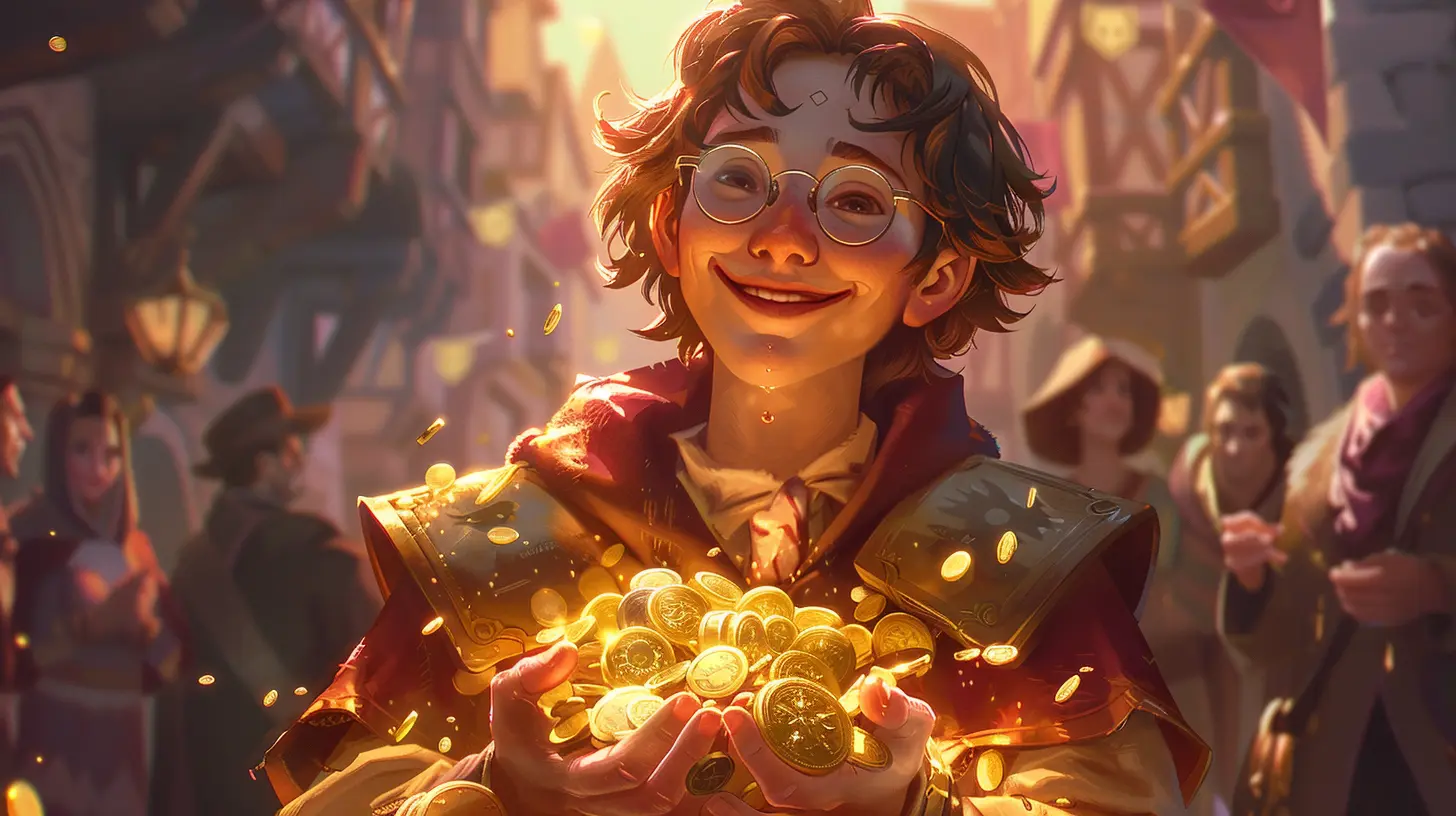Earning Microtransactions Through Gameplay: Is This a Fair Model?
24 August 2025
Microtransactions. Love them or hate them, they’ve become a staple in the gaming industry. Whether you're a casual player or a hardcore enthusiast, chances are you've encountered them in some form. In recent years, developers have started implementing a unique twist to this often-criticized mechanic: earning microtransactions through gameplay. It's a model that, at first glance, seems fairer than simply buying your way to victory. But is it? Let’s dive into this hot-topic debate and peel back the layers of this controversial system.
What Are Microtransactions, Anyway?
Before we get ahead of ourselves, let’s take a quick pit stop to define microtransactions. These tiny purchases live in the gaming world, where players spend real money to unlock various in-game content like cosmetic skins, extra lives, virtual currency, weapons, or even premium features.For example, ever played a mobile game where you could just buy gems to speed up building times? Bam—you’ve stumbled into the realm of microtransactions. They’ve become such a big deal that some games rake in millions (or even billions) of dollars a year just from these little add-ons.
But here’s the twist: instead of paying with your wallet, what if you could earn these rewards just by playing? Sounds pretty sweet, right? Well... it’s a bit more complicated than that.
The Evolution of Microtransactions in Gaming
Let’s time-travel for a second. Back in the day, if you bought a game, you owned the whole thing—no extra payments, no hidden fees. You paid $50 or $60, popped in the disc (RIP to physical copies), and enjoyed the full experience.Fast forward to the present, and it’s a completely different beast. Now, many games embrace the Games as a Service (GaaS) model, keeping players engaged long after launch with updates, events, and—you guessed it—microtransactions. While some games still offer paid-only content, others have introduced systems where players can earn microtransaction rewards through gameplay. And that sounds like a win-win... or is it?
How Does "Earn-Through-Gameplay" Work?
Alright, let’s break this down. In games that adopt this model, microtransactions can be acquired through sheer determination and time spent in the game. Whether you’re grinding for in-game currency or completing challenges, it feels like you’re "earning" those coveted skins or upgrades rather than just slapping down your credit card.A few examples? Fortnite’s Battle Pass lets you unlock cosmetics by completing tasks and leveling up. Call of Duty does something similar with their seasonal passes. These games encourage consistent player engagement and reward gamers who are willing to put in the hours.
But—and here comes the kicker—what happens when the grind becomes too much? What if the time investment doesn’t match the reward? This is where things get dicey.
The Pros of Earning Through Gameplay
To be fair, there are some undeniable perks to this system. Let’s talk about the good stuff first.1. A Fair Chance for Everyone
One of the biggest selling points is accessibility. Don’t want to spend your hard-earned cash on a cool character skin? No problem—just put in some time and unlock it yourself. This makes premium content available to players who may not be able to afford it otherwise. It levels the playing field, at least on the surface.2. Encourages Longer Playtime
Let’s face it—earning rewards feels amazing. Grinding for a legendary item and finally unlocking it scratches that itch in the best way possible. Not to mention, developers get what they want: players spending more time in their game. It’s a win-win, right?3. Adds a Sense of Achievement
There’s something immensely satisfying about earning something through pure grit. When you finally unlock that rare weapon skin, it feels like a badge of honor—a testament to your perseverance. Compare that to buying the same item with cash, and it’s easy to see why the "earn-through-gameplay" model feels more rewarding.The Dark Side: When Earning Through Gameplay Falters
Now, let’s flip the coin. While the premise sounds fair, the execution often stumbles. Here’s why some players (and critics) aren’t buying into the "earn-through-gameplay" hype.1. The Grind Can Be Real
Okay, let’s address the elephant in the room: grinding. Some games make the process of earning microtransactions so tedious that it feels like a second job. Spending 40 hours for a single cosmetic? That’s a full-time workweek! Developers intentionally create these time sinks to nudge players toward the "easier" option—whipping out the credit card.2. FOMO and Time-Limited Rewards
Many of these systems exploit players’ fear of missing out (FOMO). Limited-time rewards and battle passes pressure gamers to play constantly or risk losing out on exclusive items. This creates a stressful, all-or-nothing gameplay experience. Let’s be real: who wants to feel like they have to log in every day just to keep up?3. The Pay-to-Skip Trap
Here’s where things get sneaky. If grinding becomes unbearable, there’s always the option to... pay up. Developers know this, and some might intentionally design systems that push players into spending money. It’s a clever psychological tactic, but it blurs the lines between "fair" and "predatory."Developers’ Perspective: Why Do They Do It?
It’s easy to point fingers at developers, but let’s pause for a moment. Why do so many games adopt this model? Well, from a business standpoint, it makes sense.Developing and maintaining games—especially live-service ones—costs a ton of money. Servers, updates, bug fixes, content creation... it all adds up. Microtransactions are a way to keep the cash flowing while offering ongoing value to players. And introducing an "earn-through-gameplay" mechanism can soften the backlash that often comes with traditional pay-to-win models.
Is It Truly Fair? The Verdict
So, here’s the million-dollar question (or should I say microtransaction-level question): is this model actually fair? Honestly, it depends on how it’s executed.When done right, it can strike a balance between rewarding players for their time and effort while still generating revenue for developers. But when the grind becomes unbearable or the system feels exploitative, the fairness starts to fade.
Ultimately, "fairness" is subjective. What feels like a fair trade-off to one player might feel like an insurmountable chore to another. And let’s not forget that players have wildly different schedules—someone with only an hour to spare each day won’t have the same experience as someone who can game for hours on end.
The Future of Microtransactions: What Needs to Change?
If earning microtransactions through gameplay is going to stay (and it probably will), there are a few things developers need to keep in mind:1. Transparency is Key
Gamers deserve to know exactly what they’re signing up for. Clear progression systems and honest communication go a long way in building trust.
2. Avoid Onerous Grinds
Grinding is okay—to a point. Make sure the rewards are proportional to the effort required, or players might feel like they’re being manipulated.
3. Free Doesn’t Mean Inferior
Don’t make free rewards feel like scraps from the table. If paying players get all the best stuff while "grinding" players are left with crumbs, the model starts to feel unfair.
Final Thoughts
At the end of the day, earning microtransactions through gameplay has potential. When done thoughtfully, it can give players a sense of accomplishment and fairness while still supporting game developers. But let’s not pretend it’s a perfect system—it’s got its flaws, and there’s plenty of room for improvement.Whether you’re a fan of the grind or prefer to skip it altogether, one thing’s for sure: microtransactions aren’t disappearing anytime soon. Love them or hate them, they're here to stay. The real question is—are they evolving in a way that benefits everyone?
all images in this post were generated using AI tools
Category:
MicrotransactionsAuthor:

Greyson McVeigh
Discussion
rate this article
1 comments
Kayla Murphy
This model offers players a chance to earn microtransactions through gameplay, promoting engagement and rewarding skill. However, it risks creating imbalances if not implemented carefully. Balancing accessibility with fair opportunities is crucial for maintaining a positive gaming experience.
September 25, 2025 at 3:18 AM

Greyson McVeigh
Thank you for your insightful comment! You raise an important point about balancing engagement and fairness. Proper implementation is key to ensuring a positive experience for all players.


